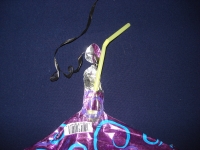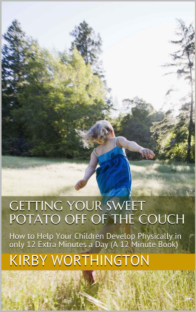Strengthening large muscle groups (gross motor skills) helps with balance, strength, eye-hand coordination, eye-foot coordination, and overall body coordination (proprioception). This can be done in many ways and starting from an early age. It is important to help your child learn to be aware of where there body is in space. As we go through some techniques to developing these skills, there is a general guideline to remember: Children develop from the head down and from the center of the body outward...the head develops before the feet and the shoulders before the hands.
In all of these things it is important to remember to never tease a child by calling them a clutz. Even if they have these tendencies, early intervention can help with that.
From early on, eye-hand coordination can be developed with the use of a mylar balloon hanging from above (on a mobile, etc.) so that the child can watch it. It is light and small enough that the child can make it move easily. Infants move their bodies to practice using their muscles. If they can make something else move at the same time, they will do it more!


 Parents of preschoolers are tired people. Caring for little ones is exhausting work. We have the best intentions of providing enriching activities for our kids, but when exhaustion sets in, good intentions go out the window. To help you plan for those times when you need something your child can do while you are lying down or sitting, here's a list of 20 activities.
Parents of preschoolers are tired people. Caring for little ones is exhausting work. We have the best intentions of providing enriching activities for our kids, but when exhaustion sets in, good intentions go out the window. To help you plan for those times when you need something your child can do while you are lying down or sitting, here's a list of 20 activities.



